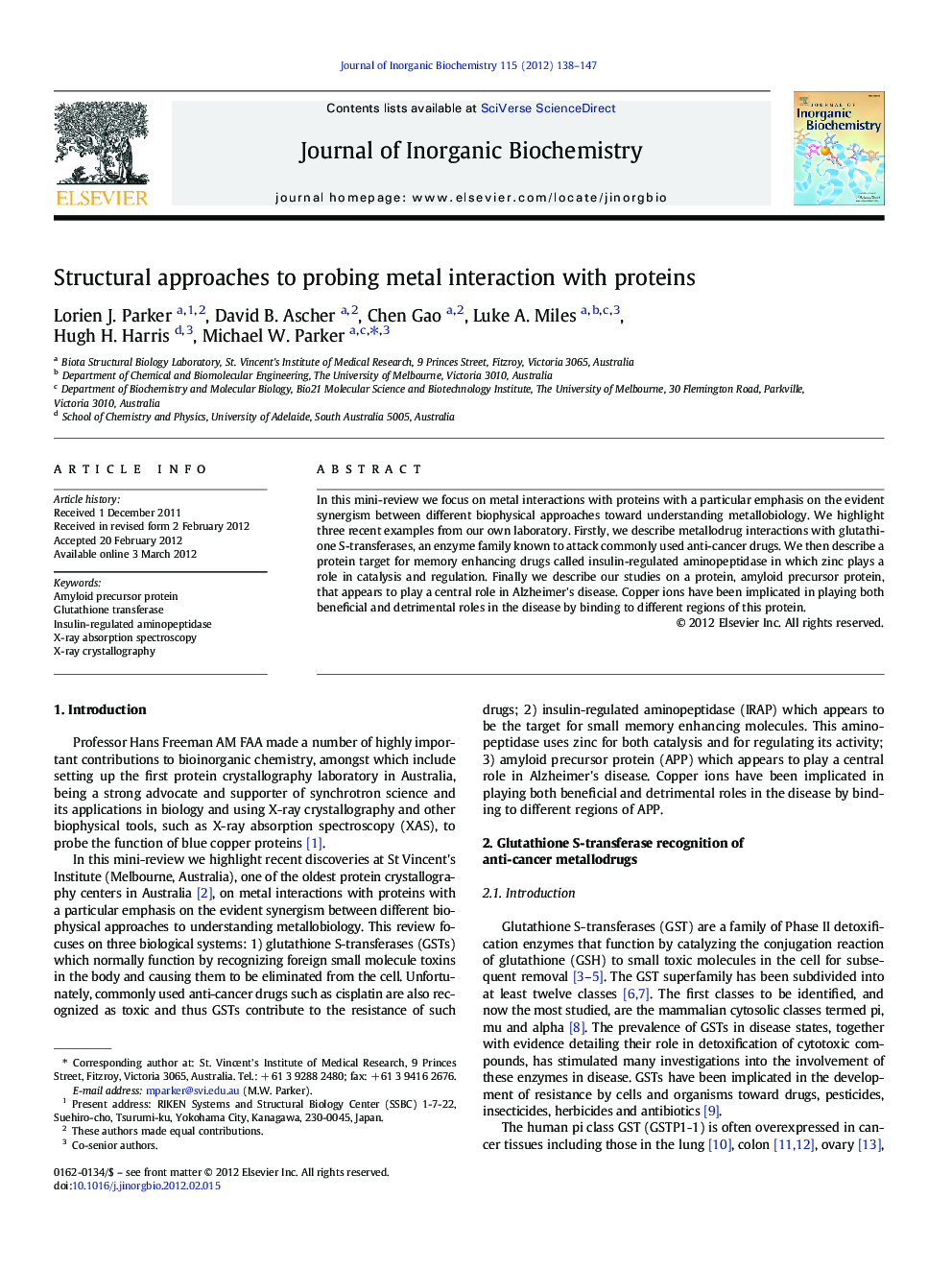| Article ID | Journal | Published Year | Pages | File Type |
|---|---|---|---|---|
| 1316387 | Journal of Inorganic Biochemistry | 2012 | 10 Pages |
In this mini-review we focus on metal interactions with proteins with a particular emphasis on the evident synergism between different biophysical approaches toward understanding metallobiology. We highlight three recent examples from our own laboratory. Firstly, we describe metallodrug interactions with glutathione S-transferases, an enzyme family known to attack commonly used anti-cancer drugs. We then describe a protein target for memory enhancing drugs called insulin-regulated aminopeptidase in which zinc plays a role in catalysis and regulation. Finally we describe our studies on a protein, amyloid precursor protein, that appears to play a central role in Alzheimer's disease. Copper ions have been implicated in playing both beneficial and detrimental roles in the disease by binding to different regions of this protein.
Graphical abstractMetallodrug ethacraplatin binding to the detoxifying enzyme glutathione transferase. The intact compound binds first at the enzyme's dimer interface, the compound is then cleaved and the ethacrynic moieties transverse to the substrate-binding site to inhibit the enzyme while the platinum center remains bound to the dimer interface.Figure optionsDownload full-size imageDownload as PowerPoint slideHighlights► Glutathione transferases are involved in the anti-cancer metallodrug resistance. ► Zn binding to insulin-regulated aminopeptidase controls activity and regulation. ► Cu binding to Alzheimer's amyloid precursor protein affects signaling and processing. ► Crystallography and XAS have proved to be complementary in studies of these proteins.
